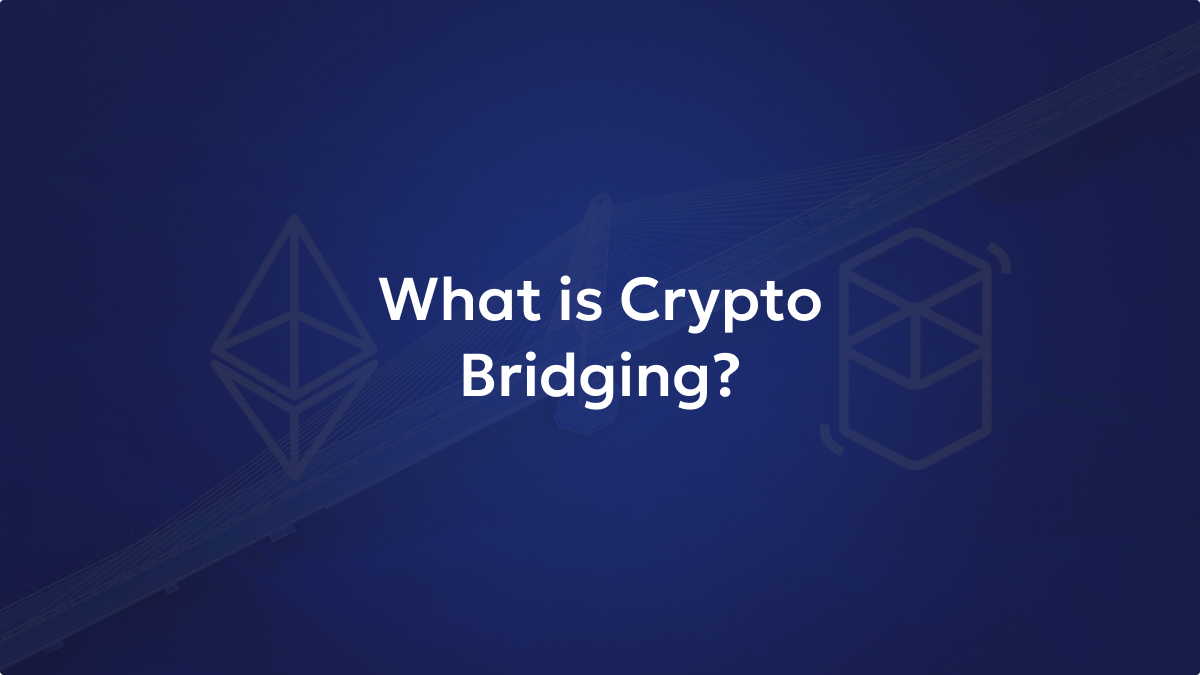Crypto bridging, also known as cross-chain bridging, is a critical technology in the blockchain ecosystem that enables the transfer of digital assets and information between different blockchain networks. As the blockchain landscape expands with numerous independent networks, the challenge of interoperability becomes increasingly significant. Crypto bridges serve as a solution to this problem, allowing users to move assets seamlessly across chains, thereby enhancing the functionality and reach of various blockchain applications.
What is a Crypto Bridge?
A crypto bridge is a software protocol designed to facilitate communication and interaction between two or more distinct blockchain networks. It acts as a conduit that allows for the transfer of assets and data, effectively linking disparate systems that would otherwise operate in isolation. By enabling the exchange of information and assets, crypto bridges play a pivotal role in creating a more interconnected blockchain ecosystem.
When a user wishes to transfer assets from one blockchain to another, a crypto bridge does not physically move the original tokens. Instead, it creates a wrapped version of the asset on the target blockchain. For example, if a user wants to send Bitcoin (BTC) to an Ethereum wallet, the bridge will generate a token that represents the BTC on the Ethereum network, often in the form of an ERC-20 token. This process allows users to utilize their assets across different platforms without the need for centralized exchanges, which can be costly and time-consuming.
Why is Crypto Bridging Necessary?
The necessity for crypto bridging arises from several factors:
- Interoperability: Different blockchains often have unique protocols and standards, making it difficult for them to communicate. Crypto bridges address this interoperability issue by enabling asset transfers across networks.
- Cost Efficiency: Transferring assets through a bridge can be more economical than using centralized exchanges, which typically charge fees for trading and withdrawals. By using a bridge, users can avoid multiple transaction fees associated with converting assets on exchanges.
- Access to Diverse Ecosystems: Each blockchain offers unique features and applications. For instance, Ethereum is known for its robust decentralized finance (DeFi) ecosystem, while Solana boasts lower transaction costs and faster speeds. Crypto bridges allow users to access these diverse ecosystems without the hassle of converting assets through centralized platforms.
- Flexibility and Control: Non-custodial bridges enable users to maintain control over their assets throughout the bridging process. Unlike custodial solutions, where users relinquish control to a third party, non-custodial bridges utilize smart contracts, ensuring that users retain ownership of their assets.
Types of Crypto Bridges
Crypto bridges can be broadly categorized into two types: custodial bridges and non-custodial bridges.
- Custodial Bridges: These bridges are managed by a central organization or entity. Users must trust this entity to verify and validate transactions. While custodial bridges may offer lower fees for large transfers, they come with risks, such as potential hacks or mismanagement of funds. Users lose direct control over their assets when they deposit them into these bridges.
- Non-Custodial Bridges: Also known as decentralized bridges, these utilize smart contracts and decentralized protocols to facilitate transfers. Users do not need to deposit their assets into a central entity, allowing them to retain full ownership and control. Non-custodial bridges are generally considered more secure and user-friendly, as they do not require personal information or account creation.
How Does Crypto Bridging Work?
The mechanics of crypto bridging involve several key steps:
- Initiation: The user initiates a transfer by specifying the source and destination blockchains and the amount of assets to be transferred.
- Wrapping: The bridge creates a wrapped version of the asset on the destination blockchain. For example, if a user wants to transfer BTC to Ethereum, the bridge will lock the BTC on the Bitcoin network and issue an equivalent amount of wrapped BTC (WBTC) on Ethereum.
- Verification: Smart contracts on both blockchains ensure that the transaction is valid and that the wrapped asset corresponds to the locked asset. This verification process is crucial for maintaining the integrity of the transfer.
- Completion: Once the transaction is verified, the user can access the wrapped asset on the destination blockchain, allowing them to utilize it within that ecosystem.
Benefits of Crypto Bridging
Crypto bridging offers numerous advantages, including:
- Reduced Fees: By eliminating the need for centralized exchanges, users can save on transaction and trading fees.
- Faster Transactions: Bridges often facilitate quicker transfers compared to traditional methods, allowing users to access their assets more rapidly.
- Enhanced Liquidity: Bridges can create unified liquidity pools that allow for efficient swaps between different assets across multiple blockchains.
- Access to New Opportunities: Users can explore various decentralized applications (dApps) and services across different blockchains, enhancing their investment and usage options.
Challenges and Risks
Despite the benefits, crypto bridging is not without challenges and risks:
- Security Vulnerabilities: Bridges can be targets for hackers, as evidenced by high-profile exploits that have resulted in significant losses. Ensuring the security of the bridging protocol is paramount.
- Finality Issues: The concept of finality refers to the assurance that a transaction is irreversible. If a transaction is reversed on the source chain, it can create complications on the destination chain, potentially leading to unbacked tokens.
- Complexity: Users may find the process of bridging assets complex, especially if they are unfamiliar with the mechanics of different blockchains. This complexity can deter some users from taking advantage of bridging opportunities.
The Future of Crypto Bridging
As the blockchain ecosystem continues to evolve, the importance of crypto bridging will likely grow. With the proliferation of new blockchains and applications, the need for seamless interoperability will become increasingly critical. Innovations in bridging technology, such as improved security measures and user-friendly interfaces, will enhance the overall user experience.
Moreover, the integration of bridges into various DeFi protocols will simplify the process of asset transfers, making it more accessible to a broader audience. As more users recognize the benefits of bridging, the demand for efficient and secure cross-chain solutions will continue to rise.
Conclusion
Crypto bridging represents a significant advancement in the blockchain landscape, addressing the challenges of interoperability and enabling users to transfer assets across different networks. By facilitating seamless communication between blockchains, crypto bridges unlock new opportunities for users and enhance the overall functionality of decentralized applications. As the technology matures, it will play a crucial role in shaping the future of the blockchain ecosystem, fostering a more interconnected and efficient digital economy.







